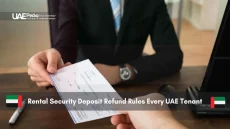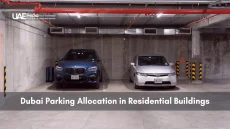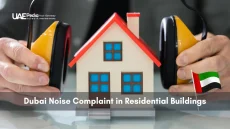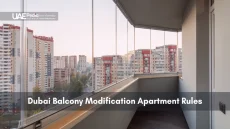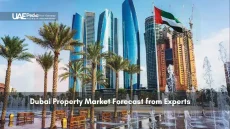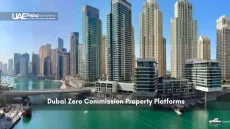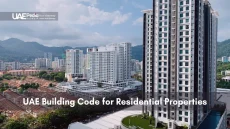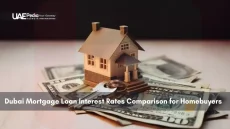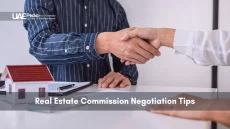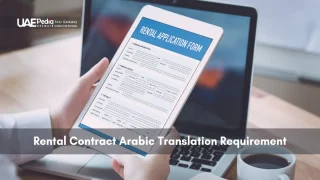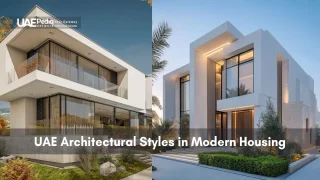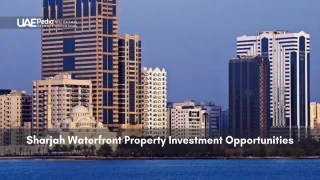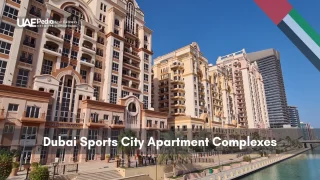Did you know Dubai now requires all new buildings to reduce energy use by 30% by 2030? This bold vision isn’t just about skyscrapers—it’s reshaping how living spaces blend luxury with responsibility. From solar-powered villas to neighborhoods cooled by smart design, the city’s real estate innovators are crafting homes that honor both tradition and tomorrow.
We’re not talking basic upgrades. Think recycled steel framing desert winds, rooftops doubling as gardens, and communities sharing renewable energy. Developers here aren’t just building houses—they’re engineering ecosystems. And the best part? These advancements feel less like sacrifices and more like smart upgrades to daily life.
This guide walks you through Dubai’s latest architectural leaps. We’ll explore how cutting-edge materials slash cooling costs, why shaded courtyards are making comebacks, and what makes these homes magnets for global community builders. Whether you’re eyeing investment or simply love smart design, there’s something here that’ll make you rethink modern living.
What’s ahead:
- How green construction reshapes urban landscapes
- Renewable tech merging seamlessly with daily routines
- Balancing cultural aesthetics with eco-smart energy solutions
Introduction to Sustainable Housing in Dubai Real Estate
Picture a neighborhood where morning walks pass vertical gardens instead of concrete walls. This isn’t sci-fi—it’s today’s reality in forward-thinking Emirates communities. Government initiatives like the UAE Energy Strategy 2050 have sparked a design revolution, blending desert wisdom with tech-powered solutions.
Living Like Tomorrow Matters
Eco-conscious choices here feel less like trends and more like upgrades. Take The Sustainable City—its car-free zones and solar-powered villas cut household energy bills by 50%. Residents don’t just recycle; they track water savings through smartphone apps. As one architect told us: “We’re building relationships with nature, not just structures.”
Design That Breathes
Modern developments now prioritize shade patterns over square footage. Al Barari’s leafy corridors naturally cool air before it enters homes, slashing AC needs. Builders mix traditional wind towers with recycled steel frames—an artful dance between heritage and innovation.
These changes ripple beyond individual homes. Shared solar grids power entire blocks, while greywater systems nurture community gardens. It’s urban planning that remembers we’re not just residents but custodians of our environment.
Emerging Eco-Friendly Trends and Environmental Impact
Imagine waking up to a home that cools itself using desert breezes—no AC required. That’s the reality in communities like Akoya Oxygen, where design meets climate-smart innovation. Builders here aren’t just cutting costs; they’re rewriting how urban spaces interact with nature.
Energy Consumption and Renewable Resources
Solar panels now power 70% of The Sustainable City’s needs, slashing annual bills by $1,200 per villa. Developers stack solutions: wind turbines charge EV stations, while smart grids redirect excess energy to communal pools. One resident joked, “Our rooftops work harder than our stock portfolios.”
| Energy Source | Usage in Communities | Annual Savings |
|---|---|---|
| Solar Power | Villas & Streetlights | 45% Reduction |
| Wind Turbines | EV Charging Stations | 18% Energy Offset |
| Smart Grids | Shared Facilities | 30% Efficiency Boost |
Water Conservation Techniques
In arid climates, every drop counts. Greywater systems at Akoya Oxygen recycle 80% of household water for landscaping—enough to fill 12 Olympic pools yearly. Drip irrigation networks target plant roots directly, cutting waste by 60% compared to sprinklers.
Rainwater harvesting’s making a comeback too. Rooftop collectors in newer developments capture 90% of seasonal rainfall, channeling it to underground reservoirs. As one engineer noted: “We’re mining the sky instead of draining the earth.”
sustainable housing features dubai properties: Key Innovations in Construction
Builders here are turning soda cans into skyscrapers and sand into smart insulation. The construction sector’s evolution blends old-world resourcefulness with AI-powered precision. Walk through any modern site, and you’ll spot robots laying tiles beside artisans crafting recycled brass fixtures.
Green and Recycled Materials: Desert Alchemy
Jumeirah Golf Estates now uses steel made from 95% recycled content—stronger than traditional frames and 40% lighter. Developers mix crushed glass into concrete for shimmering facades that reflect heat. One engineer grinned: “We’re not just building homes—we’re upcycling the city itself.”
| Material | Source | Application | Benefit |
|---|---|---|---|
| Recycled Steel | Local factories | Structural frames | 45% less CO2 |
| Bio-Glass | Crushed bottles | Facade panels | 30% heat reduction |
| Palm Fiber | Agricultural waste | Insulation | Natural cooling |
Tech That Thinks for You
Homes now learn your habits. At Bluewaters Residences, Nest thermostats sync with sunrise patterns, cutting AC runtime by 25%. Sensor-activated blinds glide shut during peak heat, while app-controlled lighting adjusts to moon phases. “Our walls have better timing than most comedians,” joked a resident.
These innovations aren’t just eco-friendly—they’re life enhancers. Imagine countertops that disinfect using sunlight or floors storing warmth for chilly nights. The future’s built smart, and it’s already here.
Showcasing Dubai’s Iconic Sustainable Developments
What if your morning jog powered your home? In groundbreaking communities across the Emirates, that’s not a fantasy—it’s Tuesday. Let’s explore two trailblazing projects redefining modern comfort through climate-conscious innovation.
Where Rooftops Work Overtime
The Sustainable City feels like stepping into a sci-fi film where nature writes the rules. Solar panels crown every villa, generating enough power to run households and charge shared electric buggies. Residents here don’t just recycle—they compete in monthly “energy harvest” challenges. “My kids remind me to unplug devices before school,” laughs Amina, a five-year resident.
Botanical Bliss Meets Bespoke Luxury
Al Barari takes a different approach: imagine Beverly Hills gardens crossed with Amazonian rainforests. Seven micro-climates thrive here, from orchid valleys to citrus groves, cooled by ancient wind tower principles. Villas feature glass that tints automatically when temperatures rise—no buttons required.
| Development | Key Features | Annual Impact |
|---|---|---|
| The Sustainable City | 500+ solar-powered homes 11 biodome greenhouses |
3,200 tons CO2 reduction |
| Al Barari | 2,000 native plant species Smart water recycling |
45% lower water use |
These communities prove luxury doesn’t require planetary debt. Green spaces double as natural air filters, while shared solar energy systems slash carbon footprints collectively. As one designer told us: “We’re not just building houses—we’re coding better habits into daily life.”
Picture weekends where your pool stays warm using yesterday’s sunlight, or dinners harvested from community gardens. This isn’t distant futurism—it’s today’s blueprint for harmonious living.
Green Technologies and Sustainable Living Applications
What if your balcony could power your morning coffee? Across the Emirates, rooftops and roadsides are becoming power plants. Solar panels now double as shaded parking covers, while geothermal cooling systems tap into Earth’s natural temps. These aren’t experiments—they’re daily realities reshaping how communities thrive.
Solar Energy and Renewable Installations
Take District 2020’s solar “trees”—striking steel structures that generate 3.8 GWh yearly while shading public spaces. Their curved panels track sunlight like sunflowers, boosting efficiency by 25%. One engineer quipped: “We’re farming photons instead of dates now.”
| Energy Source | Innovative Use | Impact |
|---|---|---|
| Solar | Floating panel farms | Powers 900 homes/year |
| Wind | Highway turbine barriers | Offsets 18% grid use |
| Geothermal | Underground cooling loops | Cuts AC needs by 40% |
Integrating Smart Transportation Solutions
Driverless shuttles now glide through green real estate initiatives, charged by station rooftops. In Jumeirah Village Circle, bike paths generate kinetic energy—10 miles pedaled lights a home for a week. “Our streets aren’t just routes; they’re power networks,” says a transport planner.
EV stations here think ahead. They reserve charging slots via app, balancing grid loads during peak hours. Rainwater collected from highways? It fuels hydrogen buses connecting eco-districts. The future’s not just bright—it’s intelligently wired.
Designing and Developing Eco-Friendly Communities in Dubai
What if your neighborhood could clean its own air? Communities across the Emirates now answer that question with construction methods that build ecosystems, not just buildings. Architects blend smart materials with cultural wisdom—think shaded walkways cooled by native plants and walls made from upcycled desert sand.
Innovative Construction Methods
Builders at Jumeirah Golf Estates use 3D-printed concrete infused with crushed ceramics. This cuts waste by 60% while creating textured facades that deflect heat. One site manager shared: “We’re not stacking bricks—we’re weaving microclimates.”
| Material | Eco-Benefit | Community Impact |
|---|---|---|
| Mycelium bricks | Carbon-negative | Natural insulation |
| Recycled glass tiles | 80% less energy | Reflects sunlight |
Community-Centric Sustainable Practices
Rooftop gardens at Downtown Circle aren’t just pretty—they’re communal kitchens. Residents harvest herbs while improving air quality. Shared solar grids power streetlights and EV chargers, creating circles of trust alongside energy savings.
Neighborhoods like Dubai Hills prove conservation can be social. Weekly “green swap” markets let people trade homegrown veggies and DIY compost. “Our kids learn math by tracking water meters,” laughs Sara, a mother of three.
These practices shape life beyond individual homes. Pocket parks double as stormwater filters, while shaded plazas host yoga classes under solar-panel awnings. It’s urban design that remembers we thrive together—not just apart.
Embracing the Future of Sustainable Housing in Dubai
What if every sunrise could power your home? Dubai’s blueprint for tomorrow answers this daily. From solar-charged courtyards to neighborhoods sharing smart energy grids, the city proves luxury and responsibility aren’t opposites—they’re partners.
Local innovators blend ancient wisdom with cutting-edge design. Think walls that breathe like palm fronds and community gardens fed by recycled water. These aren’t just homes—they’re living labs where wind towers meet AI-powered cooling systems.
We’re seeing real change. Households slash energy consumption by 50% using smart meters, while shared solar panels cut carbon footprints collectively. Water-saving tech preserves every drop—critical in arid climates.
Join us in reimagining urban life. Whether you’re drawn to energy-efficient materials or community-driven green spaces, Dubai offers a front-row seat to tomorrow’s possibilities. Let’s build neighborhoods that thrive—together.
Many communities now blend solar panels, smart thermostats, and high-efficiency cooling systems. Projects like The Sustainable City even use rooftop solar arrays to power streetlights and common areas—slashing reliance on non-renewable energy sources while keeping bills low.
From greywater recycling for garden irrigation to low-flow fixtures in bathrooms, Dubai’s developments get creative. Al Barari, for example, uses treated wastewater to maintain its lush botanical gardens, proving luxury and conservation can coexist.
Absolutely! Think app-controlled lighting, automated blinds that adjust to sunlight, and AC systems that learn your habits. These aren’t just gadgets—they’re core tools for reducing carbon footprints without sacrificing comfort.
Ever wandered through Al Barari’s villas? They’re proof that bamboo flooring, natural ventilation systems, and private green courtyards can elevate luxury living. Sustainability here isn’t a compromise—it’s a selling point.
By design! Bike paths replace car lanes, community farms let residents grow veggies, and carpool apps are baked into resident portals. It’s about making green choices the easiest—and most social—option.
Parks and rooftop gardens aren’t just pretty—they cool neighborhoods, improve air quality, and create shaded walkways. Developments like Dubai Hills Estate weave nature into daily life, turning concrete jungles into breathable, livable hubs.
Not a bit! Builders here mix reclaimed steel, recycled concrete, and even repurposed glass into sleek, durable structures. The Terra Sustainability Pavilion at Expo 2020 showed how “upcycled” materials can be both sturdy and stunning.
Communities like Dubai Silicon Oasis have solar-powered streetlights and EV charging stations. Homeowners can install panels through DEWA’s Shams Dubai initiative, feeding excess energy back into the grid—and watching their bills drop.




